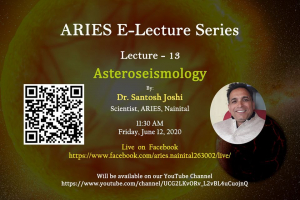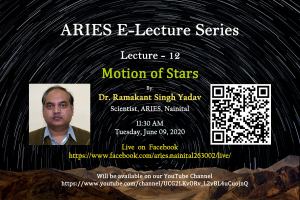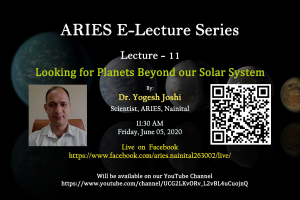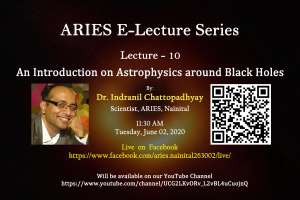
Radiative Processes in Astrophysics
Dr. Pankaj Kushwaha
About the Talk:
Our knowledge of the cosmos is primarily via electromagnetic radiation. It extends from radio to gamma-rays and of which, our eye only senses a very tiny part (called light). The radiation emitted from a source depends on local physical conditions and environment within the source and thus, investigation of different properties of the radiation (time, energy, polarization) and in different parts of the electromagnetic spectrum, provides information about complementary parts of the source. In this talk, we will cover different radiative processes in astrophysical sources with examples.

Astroseismology
Dr Santosh Joshi
About the Talk:
Asteroseismology is a unique tool that gives us an opportunity to look into the interior of stars. The revolution began with helioseismology that has been yielding valuable information on the interior of the Sun in a similar way the Geoseismologist probe the Earth’s interior using seismic waves produced during the earthquake. The last two decades have witnessed the advent of asteroseismology thanks to space missions such as Kepler, TESS those led to facilitating highly precise fairly uninterrupted long-duration data, providing more reliable results about the interiors of distant stars. After a brief introduction and overview of the discipline, I shall highlight the observational techniques used in obtaining asteroseismic data followed by recent developments taking place in the field of asteroseismology.

Motion of Stars
Dr Ramakant Singh Yadav
About the Talk:
Like everything else in nature, there is no fixity of position in the stars. They are all in motion at greater or fewer speeds. All are going through very slow but nevertheless real changes in their physical constitution. In my talk, I shall discuss the various motion of stars in our Milky Way.

Looking for Planets Beyond our Solar System
Dr Yogesh Joshi
About the Talk:
Exoplanetary science is one of the most fascinating science of today's era. Until 25 years back there was no concrete evidence of any planetary signature beyond our own solar system. However, since the first discovery of confirmed exoplanet 51 Peg in 1995, there is no looking back and now we have more than 4000 planetary systems in the Milky Way galaxy. In this talk, I will focus on the various methods employed to detect exoplanetary systems and present status of the exoplanetary science and future goal to detect other Earths beyond the solar system.

An Introduction on Astrophysics around Black Hole
Dr Indranil Chattopadhyay
About the Talk:
In this talk, we will discuss about black holes in very simple terms. We will discuss the meaning of the term astrophysics around black holes. We will discuss various methods by which matter can fall into black holes or how a part of the infalling matter can be ejected. We would list what have knowledge have scientific community achieved till date and what are the coming challenges. The entire talk will be framed at the comfort level of advanced Physics undergraduate and postgraduate students.

